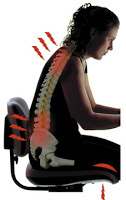The realm of cosmetic surgery, with its vast array of procedures designed to enhance and rejuvenate, offers significant benefits to individuals seeking to improve their physical appearance and, by extension, their overall well-being. Among these procedures, the breast lift, or mastopexy, stands out for its ability to restore the breasts to a more youthful position, addressing the natural effects of aging, weight changes, and motherhood. While traditionally the domain of surgical centers and hospitals, the evolving landscape of healthcare is increasingly accommodating these aspirations within the comfort of one’s home, especially for those under in-home care. This shift not only democratizes access to cosmetic enhancements like breast lifts but also underscores the importance of integrating such personal goals into comprehensive care plans, particularly for individuals in elder care, senior care, or managing chronic health conditions, where the convenience and safety of in-home care are paramount.
The decision to pursue a breast lift goes beyond mere aesthetics, touching on deeper issues of self-esteem, body image, and personal satisfaction. For individuals receiving in-home care, the prospect of undergoing such transformative procedures presents unique challenges and considerations, from ensuring the safety and efficacy of the surgery to adapting post-operative care to the home environment. However, it also opens up new avenues for personal empowerment and rejuvenation that can significantly enhance the quality of life. By exploring the fundamentals of breast lift procedures and their potential impact on individuals in in-home care settings, we can better understand how advancements in cosmetic surgery can cater to a wider range of needs, enhancing well-being and self-confidence within the familiar and supportive setting of one’s home.
Breast Lift Fundamentals
A breast lift involves removing excess skin and tightening the surrounding tissue to reshape and support the new breast contour. The nipple and areola may also be repositioned or resized to complement the newly shaped breasts. While a breast lift does not significantly change the size of the breasts, it can be combined with breast augmentation or reduction to achieve the desired volume and firmness. For those considering this procedure within an in-home care context, it’s important to have a thorough consultation with a healthcare provider to understand the potential outcomes, recovery process, and how to integrate care within their home environment.
Adapting Post-Surgical Care for In-Home Settings
Post-surgical care is a critical component of the recovery process following a breast lift. For in-home care recipients, ensuring that post-operative care is seamlessly integrated into their existing care plan is essential. This includes managing pain, monitoring for signs of infection, caring for incisions, facilitating a comfortable recovery environment, and possible 24 hour in-home care services. Caregivers and in-home care providers can play a pivotal role in supporting the individual through the recovery process, offering not only physical assistance but also emotional support. Tailoring post-surgical care to meet the specific needs and limitations of the individual, while maintaining open lines of communication with their surgical team, ensures a safe and effective recovery.
Personalized Care and Monitoring
Effective post-operative care in an in-home setting begins with a personalized care plan developed in collaboration with the patient’s surgical team. This plan should outline detailed instructions for wound care, pain management, activity restrictions, and signs of potential complications. For in-home care recipients, especially those in elder care or with limited mobility, caregivers play a crucial role in implementing these care plans, from assisting with medication management to ensuring that the patient adheres to activity restrictions. Regular monitoring of the surgical site for signs of infection or complications is essential, as is maintaining open lines of communication with the patient’s surgeon or nurse to report progress and address any concerns that may arise during the recovery period.
Conclusion: Enhancing Quality of Life Through Cosmetic Procedures
The integration of cosmetic procedures like breast lifts into the realm of in-home care represents a significant advancement in the way we approach personal health and wellness. This holistic view acknowledges that individuals’ desires to feel confident and satisfied with their appearance are as important as their medical needs, especially for those in elder care, senior care, or living with chronic conditions. The ability to pursue such treatments from the comfort and safety of home not only makes these goals more attainable but also ensures that the care received is tailored to the unique circumstances and needs of each individual. As healthcare continues to evolve, the inclusion of cosmetic enhancements within in-home care plans highlights a compassionate and comprehensive approach to care that values all aspects of an individual’s well-being.
Looking forward, the potential for cosmetic surgery to enhance the quality of life for in-home care recipients is vast and largely untapped. As we continue to break down barriers to access and develop innovative solutions for integrating cosmetic goals into personalized care plans, the benefits of procedures like breast lifts can be extended to a broader audience. This approach not only enriches the spectrum of care available to individuals in their own homes but also reinforces the importance of supporting their holistic well-being—physically, emotionally, and aesthetically. In doing so, we affirm the value of comprehensive healthcare that empowers individuals to pursue their aspirations for personal enhancement and rejuvenation, ensuring that every aspect of their health and happiness is nurtured.




